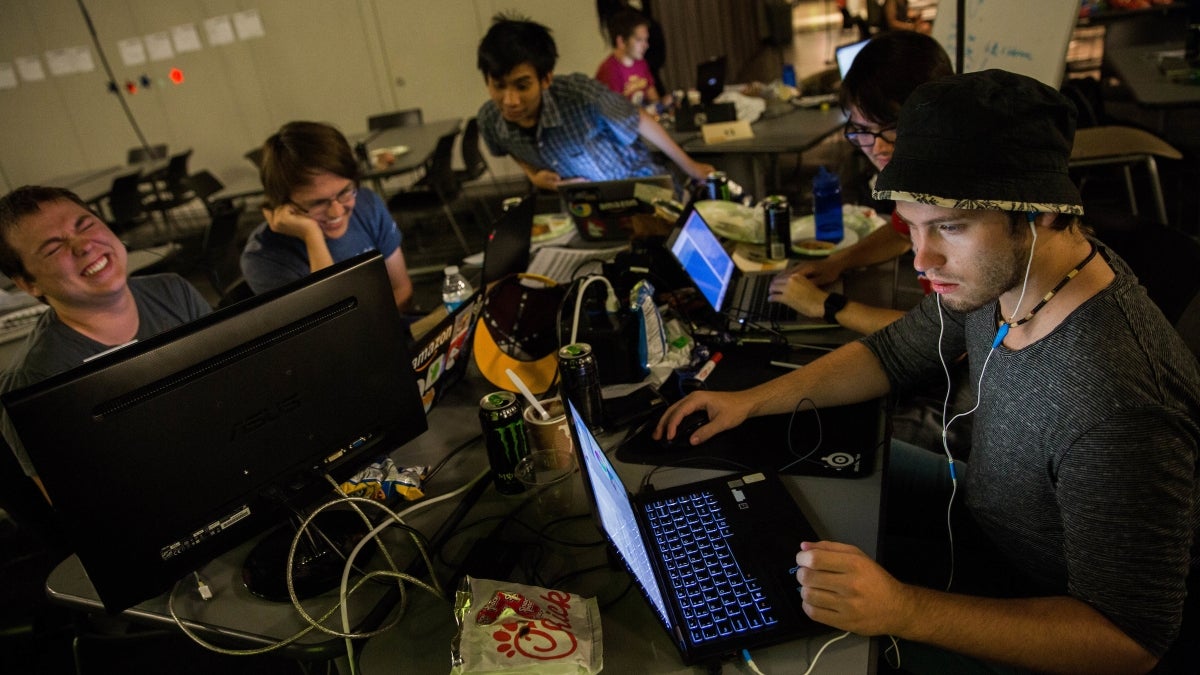Most teens load up their smartphones with apps.
Fifteen-year-old Ariana Sokolov doesn’t just use apps; she has already created five.
She got the tools and — more importantly — the inspiration from an Arizona State University initiative that unites the community to create technologies for the social good.
Ariana Sokolov
“The event changed my life because it made me realize that the technology I was creating could help others, which is fundamentally the most important attribute when creating an app,” said Sokolov, whose creations range from an innovative travel app to the idea for an app for an Arizona nonprofit that provides weekend food for needy children.
Now attending school in California, Sokolov will return to Arizona to attend the event that continues to inspire her.
Hacks for Humanity, sponsored by ASU’s award-winning Project Humanities, starts at 8 a.m. Saturday, Oct. 8, and ends Sunday late afternoon on Oct. 9 at Stauffer B Building on the ASU Tempe campus.
The 36-hour competitive hackathon challenges participants to create technical solutions and initiatives to address local and global issues by implementing the seven Humanity 101 principles: kindness, compassion, integrity, respect, empathy, forgiveness and self-reflection.
“Unlike other hackathons, Hacks for Humanity invites people from all walks of life with a wide skill set, even those who have no hacking experience,” said Neal Lester, professor of English and director of Project Humanities. “We welcome coders and creative, app makers and artists, engineers and entrepreneurs alike, along with each and every person in between. When these diverse perspectives come together, innovation is the exciting result.”
For the past two years, the hackathons have brought together more than 200. This year the number of registered participants has doubled and sponsorships have tripled, according to Lester.
This year State Farm is a major sponsor of the event and will also be scouting for new talent.
“Our mission is to build the State Farm IT talent pipeline of the future,” said Naomi T. Johnson, State Farm’s public affairs specialist. “We accomplish this by building community relationships, engaging students in technology, providing mentorship opportunities and by creating excitement and awareness around IT careers.”
Lester said the excitement and momentum of the event builds each year because their efforts have relevance and potential for immediate impact. The hackathon has inspired technologies such as:
• a coping app that helps children with ADHD communicate with their parents
• an app that prevents parents from leaving their children in hot cars
• a game-based app that provides adaptive learning technologies for students with disabilities
• an app that sends daily reminders to perform random acts of kindness
Perhaps the most notable innovation to come out of Hacks for Humanity is ARKHumanity’s web program that connects to the interface of Twitter users who have expressed suicidal thoughts through keywords — for example, “I want to die,” “I’m going to kill myself,” or “I hate my life” and other similar phrases. A crisis counselor could then ascertain if he or she should reach out to the person and offer help.
Team members — Jordan Bates, Ram Polur, BinHong Lee, Kacie McCollum and Pat Pataranutaporn — created the program at the 2014 hackathon and went on to win the $10,000 grand prize at ASU Changemaker Central’s “Innovation Challenge,” as well as $17,500 from the Pakis Social Entrepreneurship Challenge from the W.P. Carey School of Business. Additionally, this group has now formed the non-profit organization Humanity X, which strives to improve humanity through creative, new technologies.
This year some of the members will serve as mentors.
Pataranutaporn said he and three others will co-author a scholarly report on this year’s hackathon, analyzing the working process, design experience and best practices for creating innovation.
“We’ve learned so far that humanity is an important element in technology creation,” Pataranutaporn said.
“It makes human life better.”
Top photo: Students from team Ayylmao work into the night during the Hacks for Humanity in Tempe on Oct. 3, 2015. The two-day program features techies, programmers, developers and creative visionaries gathered in one place to hack for the social good and to build technology solutions for the issues facing society. Photo by Deanna Dent/ASU News
More Science and technology

ASU at the heart of the state's revitalized microelectronics industry
A stronger local economy, more reliable technology, and a future where our computers and devices do the impossible: that’s the transformation ASU is driving through its microelectronics research…

Breakthrough copper alloy achieves unprecedented high-temperature performance
A team of researchers from Arizona State University, the U.S. Army Research Laboratory, Lehigh University and Louisiana State University has developed a groundbreaking high-temperature copper alloy…

4 ASU researchers named senior members of the National Academy of Inventors
The National Academy of Inventors recently named four Arizona State University researchers as senior members to the prestigious organization.Professor Qiang Chen and associate professors Matthew…



